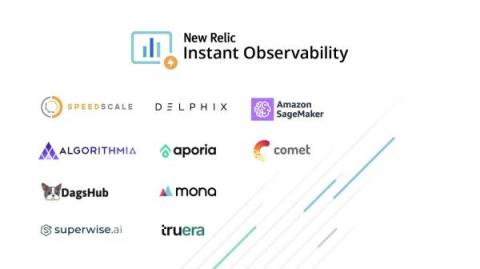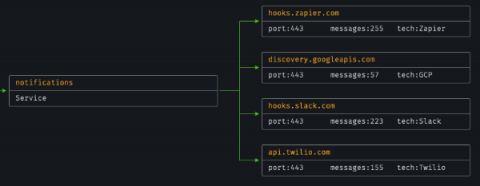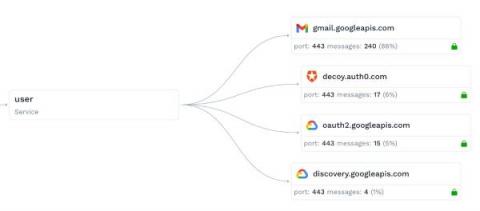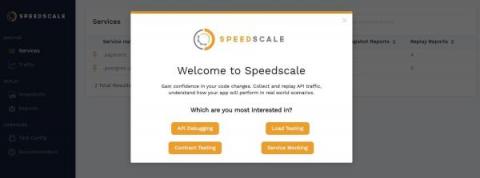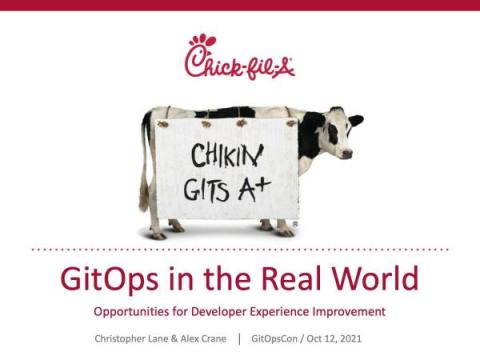Operations | Monitoring | ITSM | DevOps | Cloud
Latest Posts
REST API Observability for Python
In this blog post we’ll help answer the age old question, “What does this service talk to and what does it say?” We’ll see how to inspect inbound and outbound REST API calls to see what calls are being made and what incoming traffic causes a reaction. This can be pretty handy when you’re taking over maintenance of an existing service, or if your code just isn’t behaving the way you expect.
Service Mocks: Scaling a SaaS Demo with Traffic Replay
Building, running and scaling SaaS demo systems that run around the clock is a big engineering challenge. Through the power of traffic replay, we scaled our demos in a huge way. A few weeks ago we launched a new demo sandbox. This is actually a second generation version of our existing demo system that I built a few months ago (codename: decoy). Because the traffic viewer page shows the most recent data by default, you need to constantly be pumping new data in there. Any type of real-time SaaS system is going to have a similar requirement. So this needs to be planned.
Speedscale Teams Up With OSC Korea To Bring Traffic Replay Technology To Korea
Play with the Speedscale - no registration required
For the first time, Kubernetes engineering teams interested in learning more about Speedscale will be able to play with the framework without registering, at play.speedscale.com. Engineers can see firsthand how you: While users won’t be able to actively watch replays run, there are a variety of pre-created traffic snapshots, reports and configs to browse. Engineers will be able to experience the ease with which snapshots are generated for fast, scalable test automation.
The HTTP/2 Landscape in 2021
When the internet first came into existence in 1983, its communication channels didn't exist, and it was just operational enough to be used for research purposes. In 1989, Tim Berners-Lee had the idea to develop a system for the internet using TCP/IP protocols. That public project at CERN introduced HTTP, HTML, World Wide Web (WWW), and a client-server as communication mechanisms. In this post, you'll learn how HTTP protocol works and how new versions brought it to where we are now, with the widely used HTTP/2 in 2021.
How to Test HTTP/2 APIs
Slowly but surely, HTTP/2 is becoming the favored protocol for transporting data files between clients and servers. While HTTP/1 used to be the only way of loading web applications, it’s now lagging behind, especially on the UX front. Since 2015, HTTP/2 APIs have taken the lead with lightning-fast server responses. In particular, they’re responsible for state changes and server responses without the need for browser reloads.
SOC2 Certification
Speedscale Inc. has achieved SOC 2 Type I compliance in accordance with American Institute of Certified Public Accountants (AICPA) standards for SOC for Service Organizations also known as SSAE 18. Achieving this standard with an unqualified opinion serves as third-party industry validation that Speedscale Inc. provides enterprise-level security for customer’s data secured in the Speedscale Inc. System. Speedscale Inc.
Cloud Testing at Facebook
At Speedscale, we are on the cutting edge of defining autonomous testing for the cloud era. However, we aren’t the only company trying to solve this problem and we enjoy learning from every perspective. That’s why Facebook’s recent blog article about autonomous testing caught my eye. They’ve built a sophisticated autonomous test system that introduces many of the same techniques we utilize.
Kubernetes GitOps at Scale from Chick-fil-A
Matt and I are out in Los Angeles this week for KubeCon 2021 this week. At the GitOpsCon event Tuesday we were excited to attend this Kubernetes session: GitOps in the Real World: Opportunities for Developer Experience Improvement.


